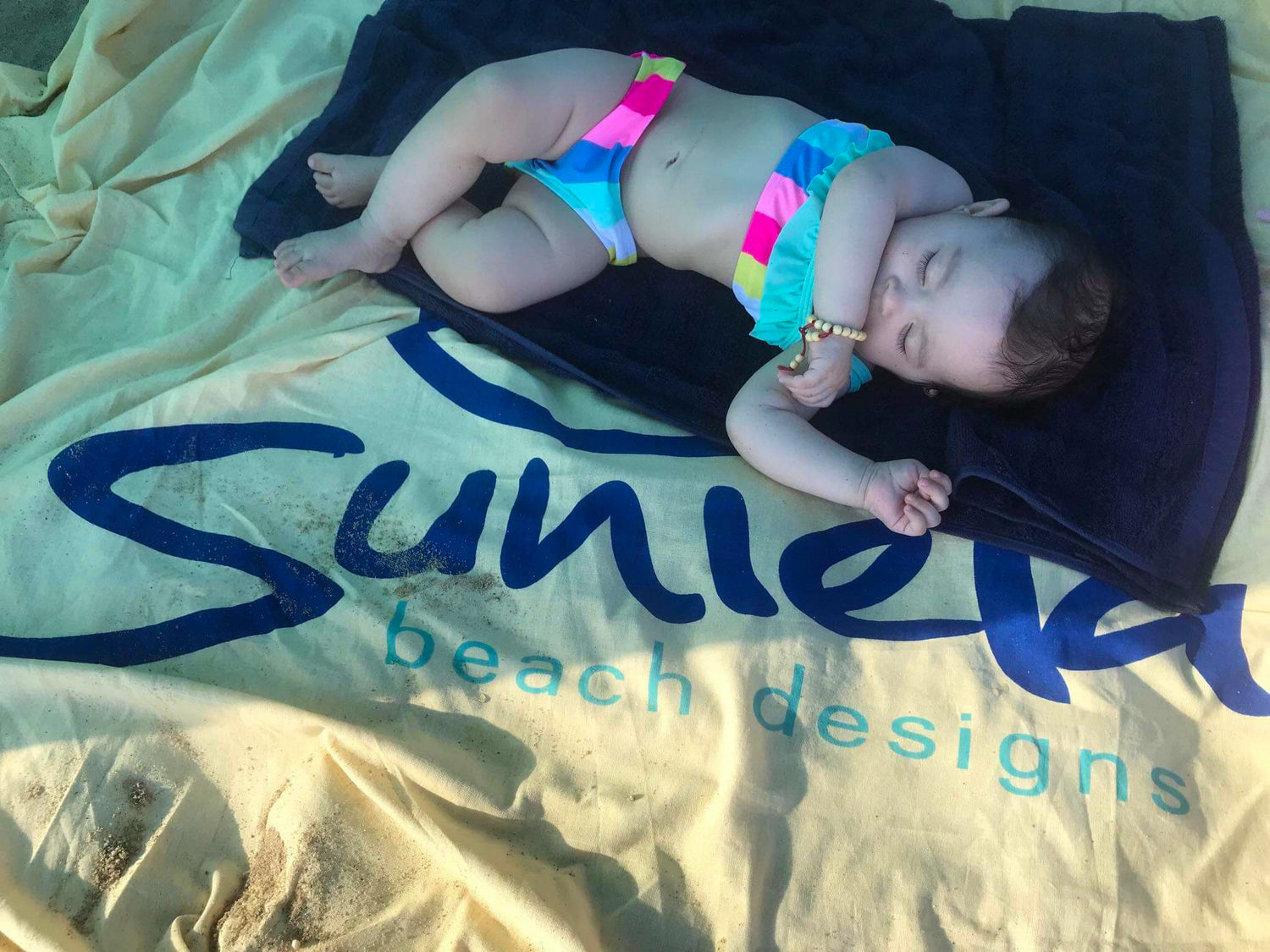Summer’s in full swing, which means fun-filled family trips to the beach are (hopefully) part of your daily life. The warm summer breeze, the shining sun and the joy of summer vacation make everybody excited - children and parents alike.
The beach is a wonderful place to have a fun and adventurous family time. However, if you’re an anxious parent, then you probably can’t help but stress on the safety of your little bundles of joy. Let us assure you that it is completely normal. However, you shouldn’t be completely stressed out.
In this read, we've bundled up ten important tips that parents should know about beach safety, so that the next time you’re planning a family trip to the beach, you can be well prepared!

Check the weather!
Checking the weather before you leave allows you to understand whether it is a good day to spend time at the beach. Weather can be very unpredictable in the summer. A bright sunny day in the morning can turn into a rainy one in a matter of minutes.
When you go to the beach, check for that day’s rain and wind forecasts along with the day’s UV level predictions, to understand if the weather will be safe enough for your children to play in. If the weather’s pleasant, pitch up your Suniela’s Beach cabana and enjoy the beach with your kids. The Suniela Beach cabana is highly wind resistant! Pitch it up once and you won't have to chase it down the beach. It also protects you from light drizzling so that you can enjoy your picnic without worrying about a little rain.

Pitch your shade near the lifeguard
Pitching your sunshelter near the lifeguard ensures that all your family members have an idea where your spot on the beach is. So in case your kids get lost, it’ll be easier for them to find you because the lifeguard is visible from the entire beach. One of the features of Suniela’s stylish cabanas is that they are great at being spotted because of their unique designs.
Staying close to the lifeguard will help keep an extra (more qualified) pair of eyes on the kids when they are playing, and also, giving you the chance to ask the guard about the safest spots in the water on the beach. That way, you can instruct your kids to only stay in that area.

Swim with caution
Children get excited when they go to the beach. Who doesn’t? But when they get excited, they do risky things. You should always tell them their swimming limitations and the dangerous consequences if they don’t. Most beaches have flags laid out in the shallow water that represent the increasing depth limits. Keeping under consideration the age of your children, you should always forbid them to go any further.
Children who do not know how to swim should wear life jackets when they enter the water. They should always swim with a partner who can swim perfectly. Moreover, they should only swim where you, and especially the lifeguard, can keep an eye on them.

Know what to do in a rip
A rip current is the one in which the water is moving away from the shore. You should tell your children about what to do if they are caught in one. Never swim against the rip current. Instead, one should always swim parallel to the shore so that when the rip subsides, one can easily swim back to shore.
Don’t bring floating toys
Do not bring floating toys for your children to play with. Floating toys can be blown and thrown further out in the water by wind. Children generally tend to go after them and swim distances that are very difficult to cover on the way back. Bring things like boogie boards so that the wind doesn’t misplace their toys.

Watch out for sea life
It’s the sea. It’s full of aquatic life. Although you generally don’t have to worry about sharks since governments only open beaches for the general public when the risk is minimum, other aquatic animals can be dangerous as well. Jellyfish, for example, fascinate children. It is a dangerous animal that your children should be aware of.
Lifeguards usually have a list of sea critters generally found on the beach. You should ask the guards to tell you and the children what to look out for.
Most children are fascinated by sea creatures such as starfish, and tend to take them out of the water. The air is toxic for these fragile creatures and they don’t survive that long if taken out of the water. Teach your children to be respectful of all aquatic life and the environment in which they thrive.

Stay hydrated
Since children spend most of the time, in or around water, they don’t feel as thirsty as they should be feeling. That does not mean that they are not getting dehydrated. Always make sure your children take water breaks. Make sure they are well hydrated to prevent sea-related illness. Lethargy and headaches are common when a person is dehydrated. So watch out for those signs.
We recommend taking lemonade for your children. It helps them regain the salts that they lose through sweat and, in all honesty, is an easy way to get fluids in them. (kids love lemonade)

Protect everyone from the sun
Insist on wearing clothing with a high SPF. Wearing protective clothing helps you and your children be safe from the harmful sun rays. If possible, you should make your children wear sunglasses as well.
Children tend to get tired and hungry really quickly on the beach. Any family picnic you’ve planned should be held under a shade. Tell your children to help you pitch up your beach cabana before they’re allowed to play. Setting up a Suniela Beach cabana is very easy because of its high portability. You won’t have to set it up twice because of it being highly wind-resistant.
Apply and reapply sunscreen!
Always apply sunscreen to yourself and your children’s delicate skin to prevent sunburns. When children go for a swim and come back, they should wear sunscreen again! Sunscreen is notorious for being washed off with water and thinning after a while. Also make sure that you apply sunscreen that has an SPF of at least 15.
No sunscreen can take the place of clothes. So make sure that you and your children wear clothes that cover most of your body to protect you from the sun’s harmful rays.
Always keep an eye!
This goes without saying. Always keeping an eye on where your children are going and what they’re doing is the best way to ensure that they are safe. By keeping an eye, you can prevent any mishaps by preventing your children from doing things that are dangerous.
Moreover, if something bad does happen, you can respond quickly and get them help. Being steadfast and ready goes a long way in preventing something bad.
Conclusion
The beach doesn’t have to be a scary place for parents. Afterall, you deserve to have fun too. Safety is as simple as ABC - Always Be Careful. You should instruct your children to follow the rules you’ve set for them. Following safety measures is good practice and will give you the peace of mind you deserve when you’re out on the beach enjoying with your kids.

